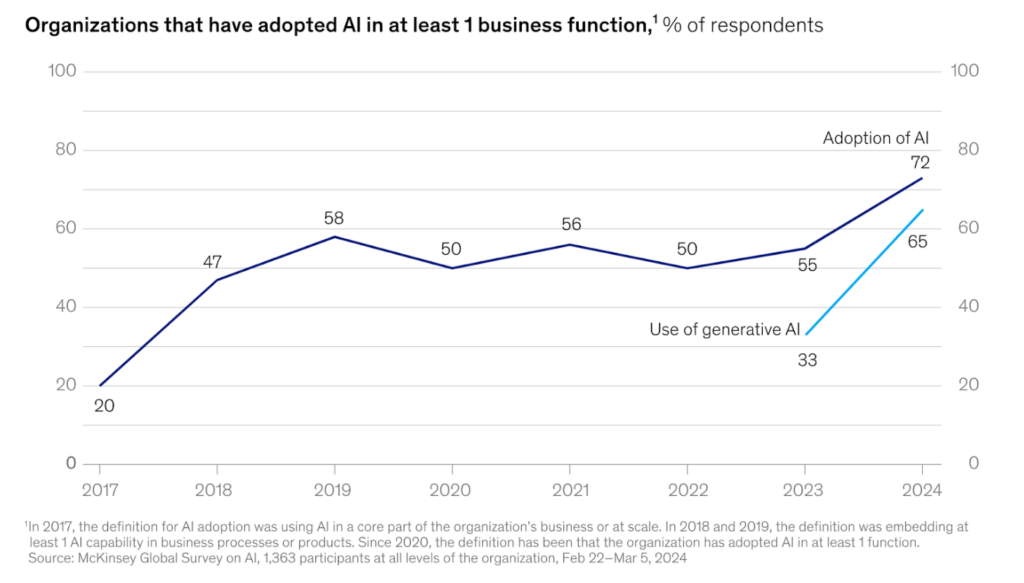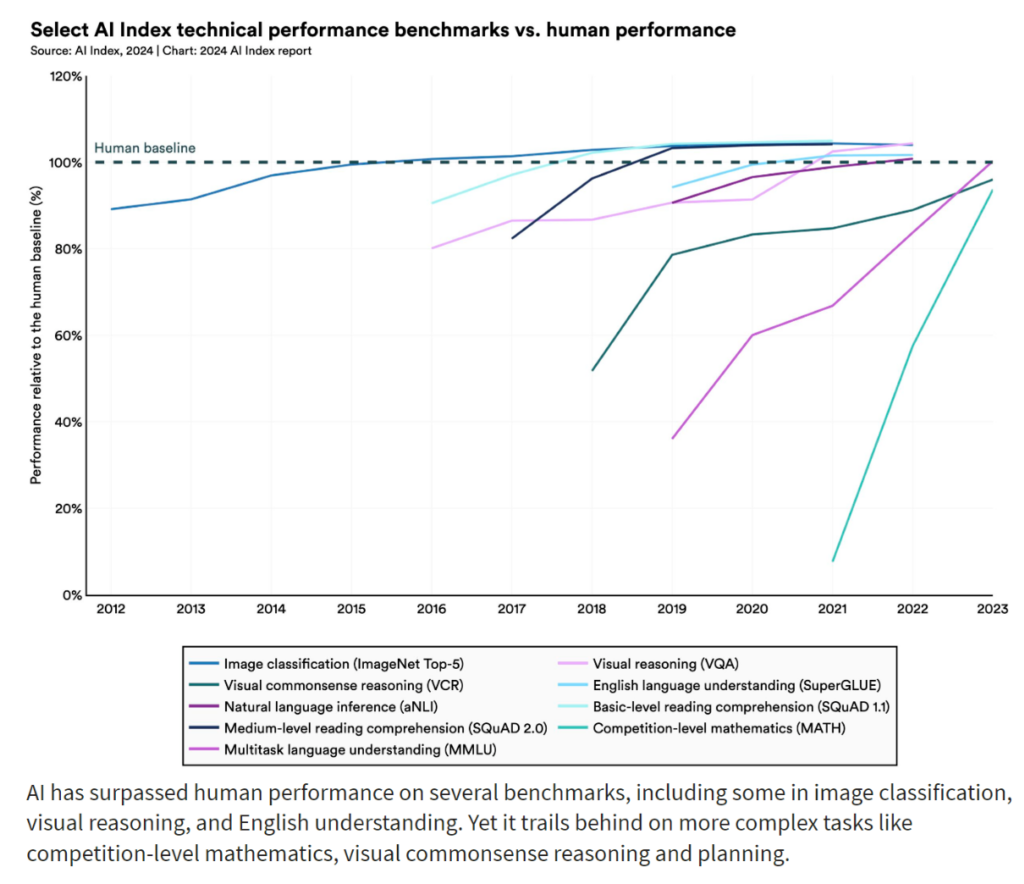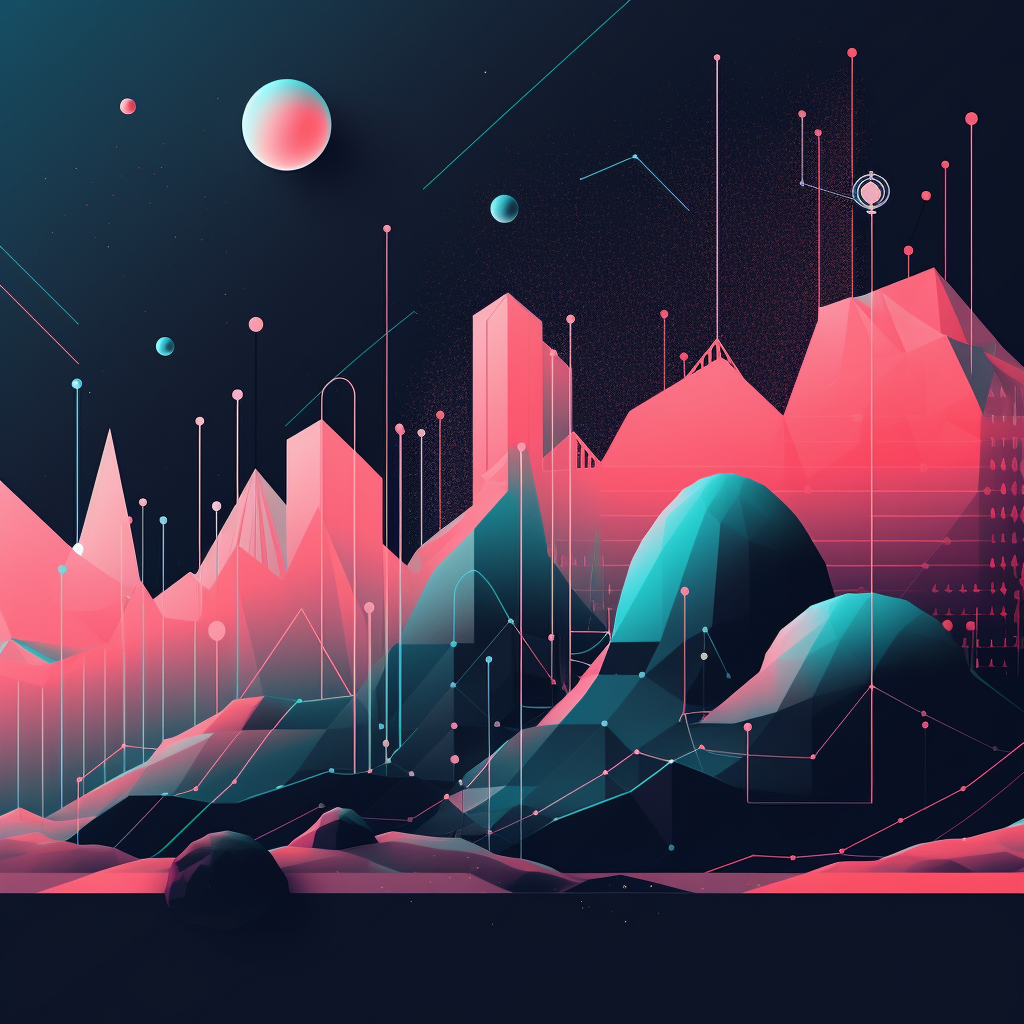AI is no longer just a buzzword – it’s a force reshaping industries and revolutionising the way we work. In the world of design, AI is driving monumental changes, offering both challenges and new opportunities for innovation. From streamlined processes to creative augmentation, AI has emerged as the designer’s powerful new toolset—ushering in a shift akin to the rise of the internet.
In this first instalment of our three-part series, Digital Design in the AI Era, we explore how AI is not only reshaping design processes but also redefining what it means to be a designer.
From the first stages of adoption to its implications for creativity and job security, this is just the beginning of a transformation that will forever alter the design industry.
AI is here to stay
In 2024, adoption of AI among organisations has jumped to 72%, with 65% of this use pertaining to generative AI. A recent Deloitte study found that 79% of business leaders expect generative AI to drive substantial transformation within their industry and organisation over the next 3 years. AI isn’t just here to stay – it’s fundamentally transforming our lives and businesses, and how we approach creativity, innovation, and digital engagement.

As the landscape of AI shifts and moulds around us, so do the processes that designers use to craft our surrounding digital landscapes. From the painter’s brush to the mouse and tablet, technology has shaped design through culture. With the advent of AI, designers can augment skills, automate processes and use new tools that Da Vinci himself couldn’t have dreamed of.
But what about job security? Won’t AI swallow whole industries?
Not when it comes to design, at least not in the near future.
Any designer worth their salt will know that most bespoke client work requires measured, strategic and highly varied approaches that depend on context and stakeholder requirements.
At Orange Line, we craft targeted and analytically informed designs with quantifiable results. We create beyond just aesthetics, with a focus on actionable concepts that drive conversion and measurable results.
There are certain dependencies, such as driving market factors or legal compliance that will always require granular attention and specificity in design. This extends across most industry areas, from top-level strategy and SEO to aesthetic composition.
An effective use of AI in design usually requires industry-specific knowledge and understanding of terminology and conceptual thinking. Given that current generative AI models require prompting and are iterative in nature, there is a critical requirement for effective communication and language in order to retrieve results that satisfy the specific needs of clients. This is a skill in itself. Even with the capacity to create 50 iterations of a design in minutes, if none of these iterations address the clients’ brief, then it’s all time spent in vain.
As it lies, AI can beat humans on some tasks, but when it comes to areas such as visual commonsense reasoning and planning, it falls short.
This study also doesn’t account for high-level expert knowledge and experience, which will often supersede AI in understanding the nuance of context-specific tasks and requirements.

AI Index Report, Stanford University, 2024
Of course, there are cases where fast and cheap solutions are required, and AI can certainly cover such needs. But what’s more compelling is the interplay between human creativity and AI—how designers can collaborate with AI to transform their workflows and supercharge performance.
As AI continues to evolve, agencies have a unique opportunity to embrace this technology without sacrificing their creative edge. The most successful design agencies will be those that leverage AI as a powerful tool while maintaining the human strategy, creativity, and insight that make their work stand out.
In part 2 of this series, we’ll explore how AI can assist designers in practical, game-changing ways.

